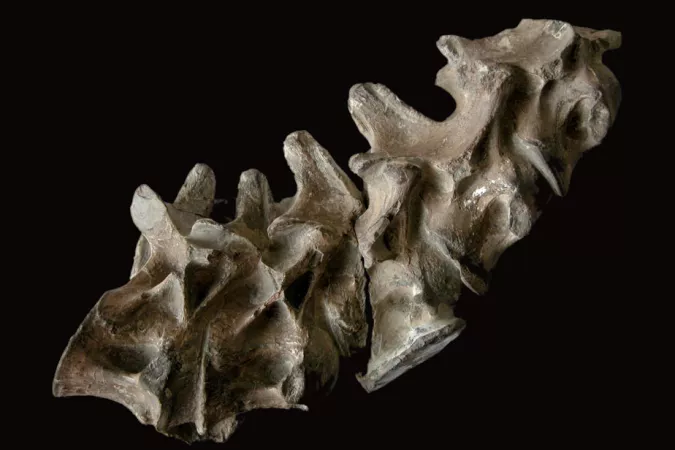Partager sur
Fossil reptile, amphibian and bird collection
The Muséum’s reptile, amphibian and bird fossil collection has gradually built up around the first fossil specimens described by Cuvier, at the turn of the 19th century. They include many reference specimens, but also greatly reflect the colonial history of France.
Presentation
The collections comprise whole skeletons, a great many individual pieces, and also moulds of specimens that have since been lost or destroyed. Due to their great age, these collections contain historically important specimens like the "Maastricht Mosasaur" and remains of crocodiles, marine reptiles and dinosaurs from the Vaches Noires Cliffs in Normandy.
Some collections, like the collection of bird fossils from the Tertiary assembled by Alphonse Milne-Edwards, are a reference all over the world. The tortoise and crocodile collections are among the most visited and the most in demand among researchers. The collections from Africa are the biggest of their kind in the world, with thousands of specimens from Madagascar, Morocco, Niger and Mali.
The French collections are naturally an essential part of these collections and contain a great many fossils from the Carboniferous and Permian basins of the Massif Central (Montceau-les-Mines, Autun), the lithographic limestones from the Jurassic of Canjuers, and the Palaeocene of the Reims region.
Research
The collection is mainly used for fundamental research (taxonomic studies, comparative anatomy, systematics, geochemistry and histology) as well as museography and teaching. The collection grows regularly thanks to donations, bequests and purchases, as well as collections carried out in the field as part of the research programmes of the Centre for research on Palaeontology-Paris (UMR 7207 MNHN/CNRS/Sorbonne University).
Contacts
Loans and visits are managed by the collection managers: http://colhelper.mnhn.fr
Dr Ronan Allain, Collection Manager
Dr Damien Germain, Collection Manager
Prof. Nour-Eddine Jalil, Collection Manager








